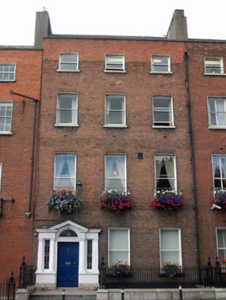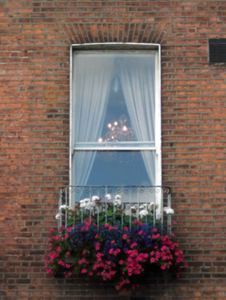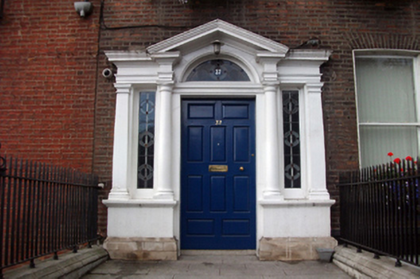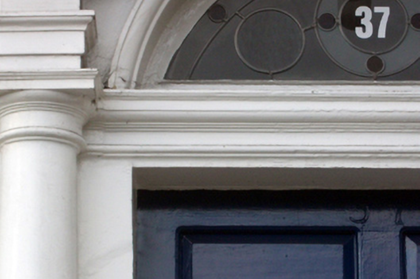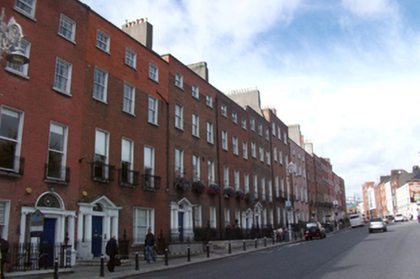Survey Data
Reg No
50010642
Rating
Regional
Categories of Special Interest
Architectural, Artistic
Original Use
House
In Use As
Building misc
Date
1760 - 1770
Coordinates
315573, 235024
Date Recorded
29/09/2011
Date Updated
--/--/--
Description
Terraced three-bay four-storey house over exposed basement, built c.1765. Now in use as theatre. Built as pair with No. 36. Pitched slate roof with clay ridge tiles behind rebuilt red brick parapet wall with squared rendered coping. Stepped rendered chimneystack to party wall, shared with No. 36. Mixed cast-iron and replacement uPVC rainwater goods. Flemish bond red brick walls with moulded granite plinth course and granite platband over rendered walls to basement. Upper portion of third floor rebuilt in Flemish bond. Slightly camber-headed window openings with gauged red brick voussoirs, rendered reveals and rendered sills. Granite sills to basement level window openings. Square-headed window openings to third floor with red brick soldier voussoirs. Historic replacement one-over-one pane timber sliding sash windows to first and second floors, later replacement one-over-one pane windows elsewhere. Cast-iron balconettes to first floor. Square-headed door opening within tripartite painted stone Tuscan doorcase with columns and responding pilasters on plinth blocks with tooled limestone plinth, columns and pilasters surmounted by moulded lintel, cornice and entablature with open-bed pediment housing replacement stained-glass fanlight. Replacement timber panelled door and replacement stained-glass sidelights. Door opens onto granite-flagged platform with stepped approach bridging basement area. Approach flanked by wrought-iron railing with wrought and cast-iron boxed corner posts on replacement granite plinth. Matching gate accessing limestone-flagged basement, shared with No. 36, via steel staircase with cast-iron handrail.
Appraisal
This dignified building maintains a shared typology consistent with the early aspect of this square and is an integral component of the streetscape. The house was built in the 1760s by Henry Darley who also built five other properties on the eastern side of the square. Of particular note is a substantial doorcase which augments the presence of this building, the limestone moulded plinth and the cast-iron brackets and lantern adding further interest. The retention of other historic features including fine masonry details, historically sympathetic timber sash windows and a pleasant slate roof, has also helped ensure the building maintains an early aspect. Parnell Square [Rutland Square] was the creation of Dr Bartholomew Mosse (1713-59) who in 1748 leased four acres at the junction of three important sites: the Gardiner Estate, O'Connell Street [Sackville Street] and Parnell Street [Great Britain Street]. There the New Gardens were constructed, a landscaped tract of land with illuminated paths, obelisks and loggia: these are now the site of the Garden of Remembrance. Entrance fees to the gardens funded the construction of the Rotunda Hospital to the south, Mosse's life ambition, and the success of the gardens precipitated the development of the surrounding square. 37 Rutland Square West [Parnell Square West] was the townhouse of John Creighton, Baron Erne (Oulton and Pettigrew 1823), and, along with its neighbour at 36 Parnell Square West, was later repurposed as Club na Múinteoirí by the Irish National Teachers' Organisation (INTO).

